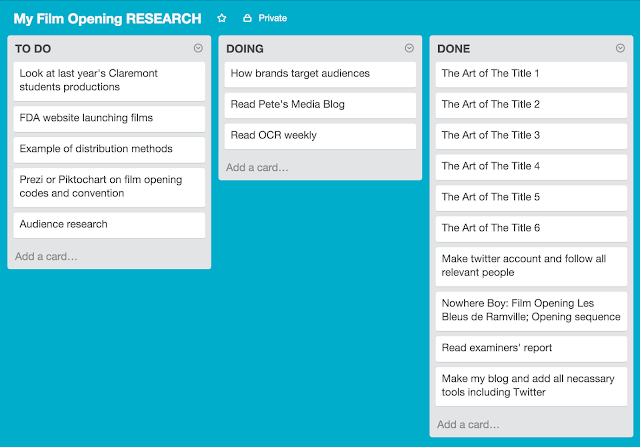I made a Twitter account to exploit the fact that it is used by many media enthusiasts. Our film can be levered using hashtags, and it is easy to connect with celebrities and influential accounts. Making our Twitter account allows us the opportunity to show the world of Twitter our progress throughout making our production. As Alan Rusbridger said, 'as a search engine, it rivals Google'. This shows the extent of how big Twitter is and how quickly topics can spread.
As well as using the Twitter account for research for material that can be used to help improve our film, I made it to help distribute our film. My reasonings for this is that firstly, Twitter is a medium that can be used to create a social group of people that are interested in the same things as myself and it also allows us as a group to invite feedback on our production. Constructive criticism is a key thing to have whilst looking for improvements as it is an honest opinion, without having any bias. As well as being helpful for feedback, it is a useful tool to help keep up with new information and to receive it quickly. This is because it allows one to keep up with specific threads by using a hashtag. It can be used as a brainstorming medium for my group also, as it is simple and instant to send tweets to one another.

From the above screenshot, there is the evidence that I have created the page with the name of 'Nine' to further show the name of the opening. I have included images taken when out on a photoshoot to help set the scene for any interested followers. The use of the the user profile picture correlates with our overall poster, so that it is easily recognisable. I have also included an image of the rugby grounds as the cover image, as it was an image I took when out taking photographs. This is to further signal the narrative content.








































